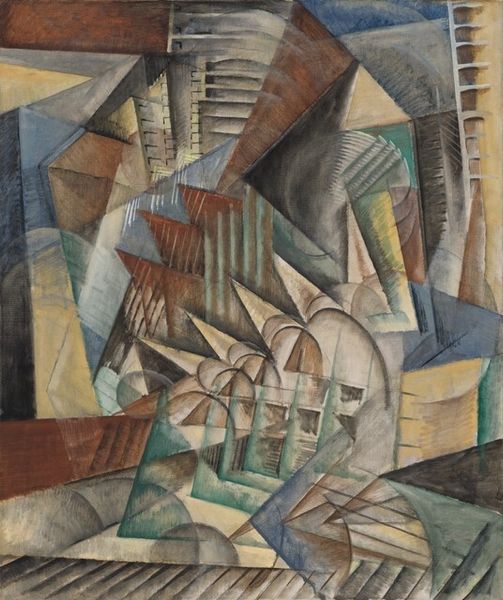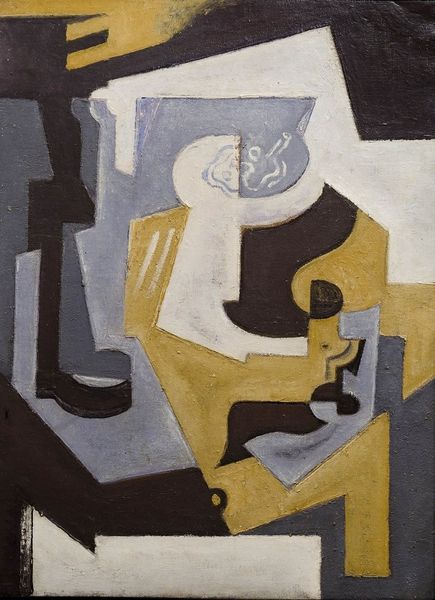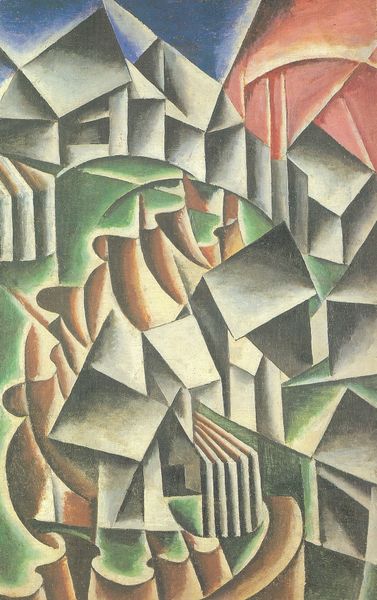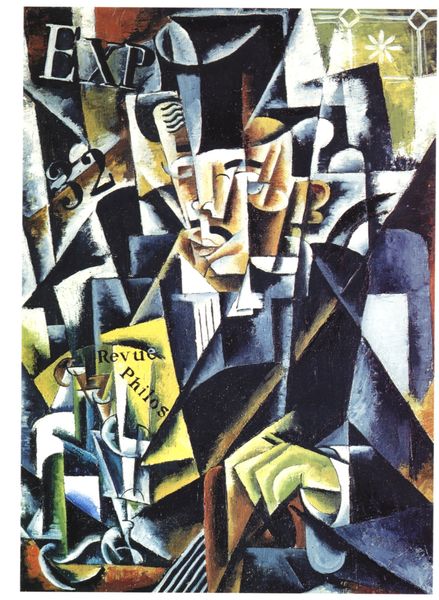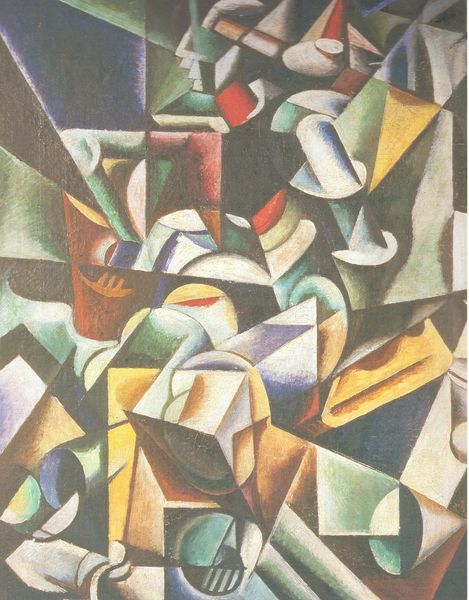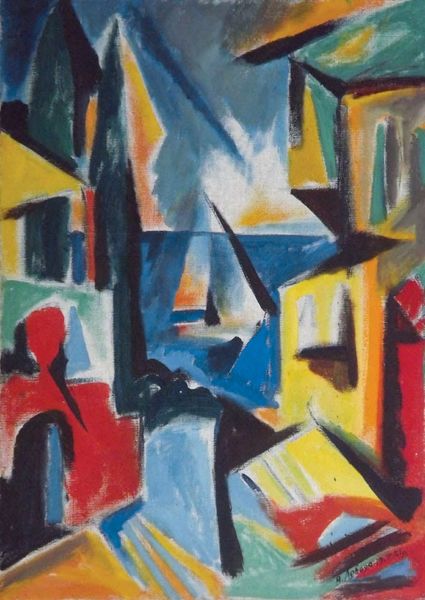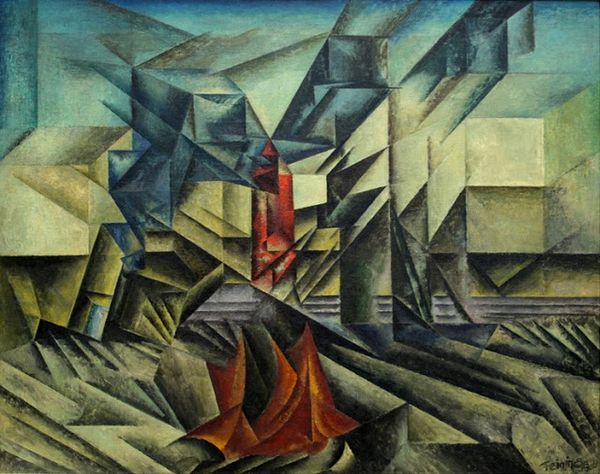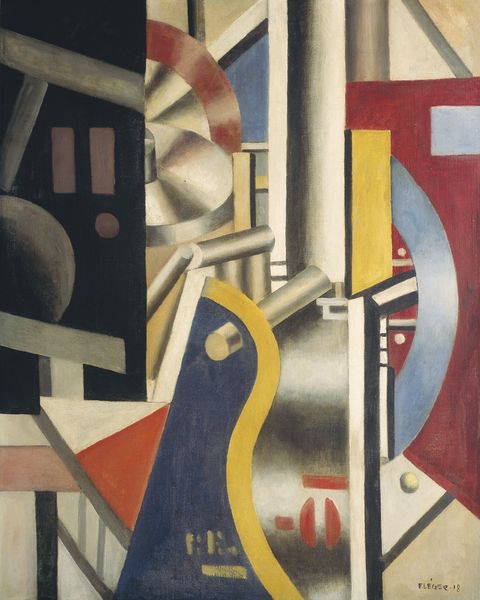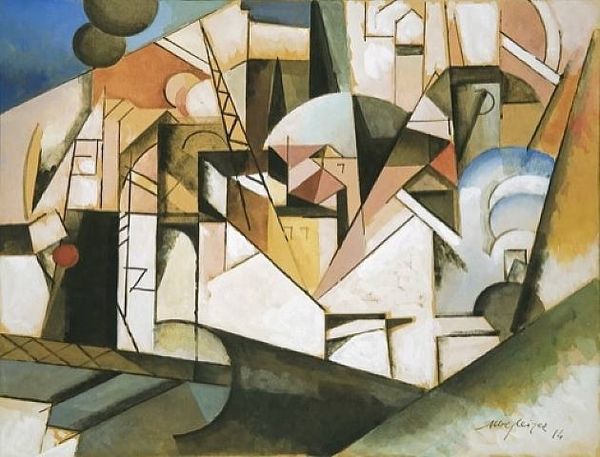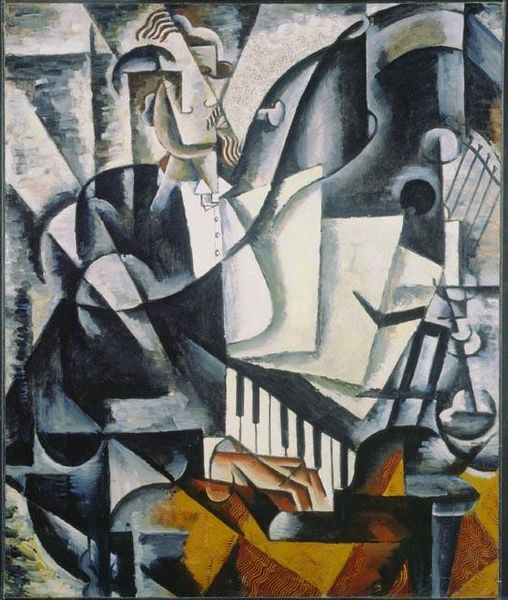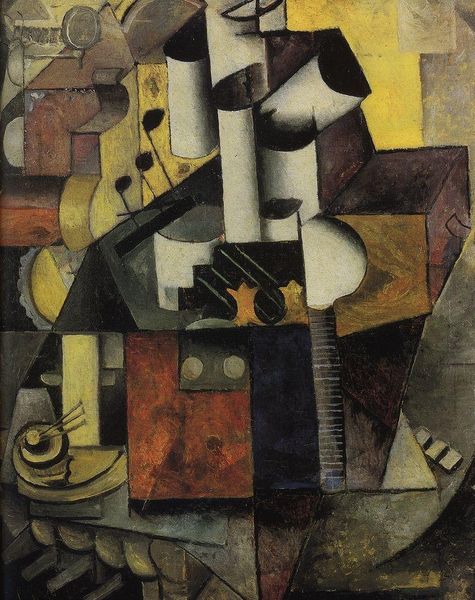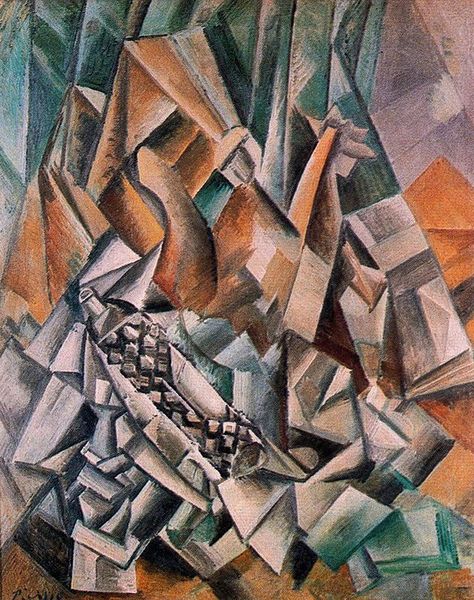
painting, oil-paint
#
cubism
#
painting
#
oil-paint
#
painted
#
oil painting
#
geometric
#
cityscape
#
modernism
#
futurism
Copyright: Public domain US
Editor: Here we have David Burliuk's "Bridge. Landscape from Four Points of View," created in 1911 using oil paint. The fractured planes and conflicting perspectives make it a little unsettling. What can you tell me about how it fits into its time? Curator: This work offers a glimpse into the avant-garde's fascination with representing the dynamism of modern life. Burliuk, as a key figure in the Russian Futurist movement, actively challenged academic traditions and societal expectations. We see echoes of Cubism's fragmented forms, but deployed with a more aggressively modern sensibility. Consider how industrialization, urbanization, and new technologies, like the automobile and cinema, were radically altering perceptions of space and time. Editor: So the painting is almost mirroring this rapidly changing society? Curator: Precisely. The Futurist’s manifesto embraced speed, technology, and even war as agents of change, celebrating a decisive break with the past. Given its original display contexts and the prevailing sociopolitical conditions of pre-revolutionary Russia, this painting serves as both an aesthetic experiment and a kind of provocation. Editor: A provocation in what sense? Curator: Its deliberate rejection of traditional landscape painting conventions reflects the Futurist desire to dismantle the established art world and provoke its audience to re-evaluate its assumptions about beauty, representation, and even progress itself. It’s important to remember that such gestures also came with an implicit social critique. Does the disjointed nature of the image also imply the chaotic state of Russian Society at that moment in history? Editor: It sounds like the artwork is less about just a landscape and more of a commentary on the period, using fractured shapes to communicate the fragmented reality of the early 20th century. Curator: Exactly! The painting’s power lies not just in its visual elements but in its reflection and active contribution to cultural dialogue during that critical era. Editor: That adds a lot more depth to how I will now see this piece! Thanks.
Comments
No comments
Be the first to comment and join the conversation on the ultimate creative platform.
